The Donor Dilemma: Rethinking Support Models for Ukrainian Media’s Future

Tetiana Gordiienko of the Media Development Foundation offers insights into the challenging task facing Ukrainian media as they navigate donor dependence, operational challenges, and the urgent need for more sustainable funding models amid the ongoing impact of war.
“I have almost stopped writing stories… We spend up to 30% of our time on [operational workload related to] grant projects. This seems to me like a lot and we can turn into a media outlet for donors and not for our audiences. This scares me a lot. I see such examples […] and I am very, very, very afraid to become the same“
“The emphasis I want to make is that donors need to sit down, look around, find ways for themselves to choose projects they trust and give them a chance to relieve a little administrative burden and give them the opportunity to secure long-term funding. […] To live and work here, you need a little more trust, because if we lose it now, we lose it gradually, then there will simply be no one to make good journalism.”
The preceding quotations are not intended as a frightening narrative for journalists as part of a Halloween prank. They are drawn from a recent research study, “The Donor Dilemma: Rethinking Support Models for Ukrainian Media’s Future” conducted by the Media Development Foundation (MDF), a Kyiv-based non-governmental organisation (NGO).
Following two years of full-scale war with Russia, Ukrainian media outlets are facing significant challenges. On the one hand, they have established close cooperation with numerous international donor organisations, which have become the main source of funding for most Ukrainian newsrooms, especially at the local level. On the other hand, such close and prolonged interaction could not fail to have had an impact.
The respondents who took part in the MDF study concluded that their media organisations develop their financial plans while taking into account the financial year of donors, or postpone major strategic decisions until they receive funding or confirmation of project agreements. They also pointed to the additional operational burden associated with project-based financing and the necessity to align their goals with the strategic goals of the projects funded by donor organisations.
This research is based on in-depth interviews with representatives of nine media outlets and consists of a thematic analysis of the collected data. Furthermore, it forms part of a number of other MDF research projects. To illustrate, MDF ran a study of the state of local media in Ukraine that comprised a survey of 37 media outlets, 12 in-depth interviews, and three expert interviews. The study revealed challenges related to funding, strategic planning, and human resources in media organisations. “The Donor Dilemma…” employs a nuanced qualitative approach to investigate these issues in a smaller sample of respondents.
As the donor and media systems become increasingly complex and intertwined, the situation is further complicated by the reduction of funding for quality journalism. The respondents observed a notable decline in the number of grant opportunities for media. Concurrently, the advertising market in Ukraine, which has been affected by the ongoing war, is only showing minimal signs of recovery. As a result of the widening funding gap, there is a risk that media organisations may be forced to downsize their teams and reduce their capacity. The least resilient players may ultimately be forced out of the media market.
“It seems to me that core support is the best model in general that can be now [for media]. I know that many Russian media outlets in exile receive core support with not so much effort, while Ukrainian editors, unfortunately, have to constantly invent some projects. Plus, these permanent projects, it seems to me, still slightly distort the reality of the needs that exist within our audience” – An editor-in-chief of a local media outlet in Ukraine.
This excerpt from the MDF report focuses on the challenge of donor relations, but there are other needs as well, including psychological support for teams under immense pressure, a crisis of human resources, and the development of a strategic planning culture.
The Ukrainian media market is approaching a point where it must undergo another round of transformation. Media organisations have already demonstrated remarkable resilience in maintaining their teams and operating effectively, despite the challenges and risks posed by the ongoing conflict.
Particularly in the Ukrainian context, the media plays a significant role at both national and local levels in supporting democratic processes, post-war recovery, and community development. While some needs, such as funding or retaining qualified personnel, are relatively visible, the research conducted by the MDF also revealed a need for solutions to maintain the progress that the media have made with an incredible effort over the last two years. One of the most urgent requests from the independent Ukrainian media is to renegotiate the funding models with the donors to allow them to work in a more sustainable and predictable way.
We encourage European partners to consider new, sustainable approaches to donor funding that will help build a resilient, independent media landscape in Ukraine, and also to join MDF in the effort to develop the Core Media Fund, an initiative designed to raise funds for sustainable ways of financing independent journalism and media advocacy in the country.
